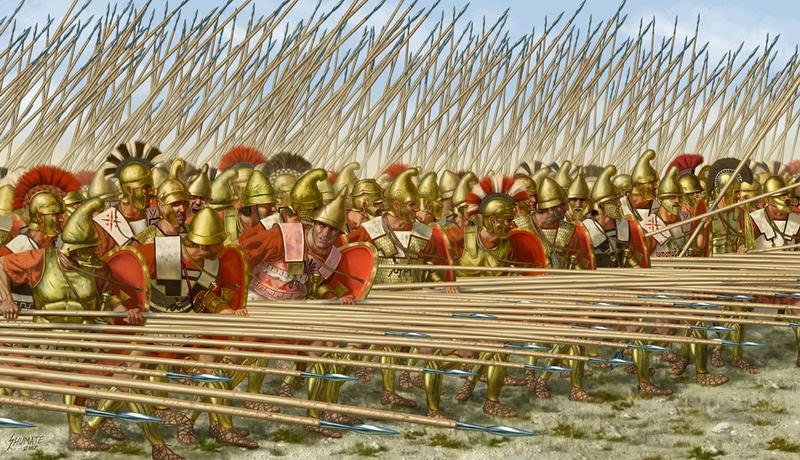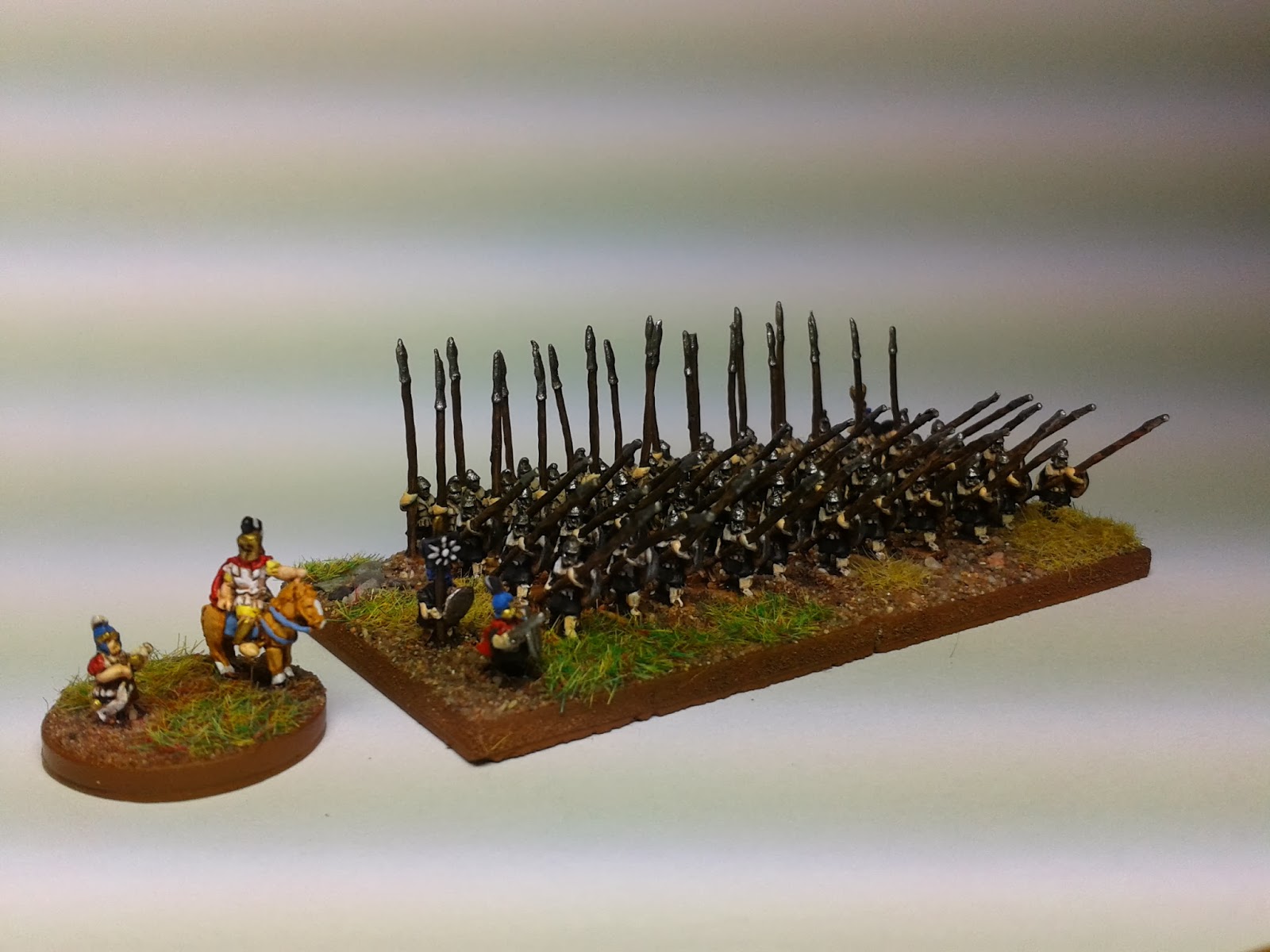Hail Antiochos! 6mm Seleukids progress report.
It's been a while since I posted about any progress on my 6mm Seleukids for Hail Caesar. These have not been idle weeks - there has been lots of gaming and lots more working - but the project did stall for a little while there while I waited for Rapier to fulfill a large(ish) order.
I'm having a bit of a love-hate relationship with Rapier at the moment. I like the idea of mixing Rapier figures in with Baccus - they scale up quite well and generally where there is something I dislike about part of one range, the other company has a nice alternative. In particular, I'm not fussed on Baccus Hellenistic pikemen and much prefer the Rapier sculpts.
However, in my experience, Rapier shipments are so very very slow. I have placed three orders with them in the past and they have taken between six and ten weeks each to arrive. The frustrating part of it all is that I have found Rapier to be quite unresponsive to emails querying recalcitrant orders. The orders do come eventually, but at a bit of a 'ye olde' pace. Never-the-less, I am now up to date with orders and am once more starting to hack away at the lead pile.
I'm still a bit behind in posting progress shots of the army as a whole though, so I thought I'd do a couple of catch ups starting with the bulk of the infantry.
I'm having a bit of a love-hate relationship with Rapier at the moment. I like the idea of mixing Rapier figures in with Baccus - they scale up quite well and generally where there is something I dislike about part of one range, the other company has a nice alternative. In particular, I'm not fussed on Baccus Hellenistic pikemen and much prefer the Rapier sculpts.
However, in my experience, Rapier shipments are so very very slow. I have placed three orders with them in the past and they have taken between six and ten weeks each to arrive. The frustrating part of it all is that I have found Rapier to be quite unresponsive to emails querying recalcitrant orders. The orders do come eventually, but at a bit of a 'ye olde' pace. Never-the-less, I am now up to date with orders and am once more starting to hack away at the lead pile.
I'm still a bit behind in posting progress shots of the army as a whole though, so I thought I'd do a couple of catch ups starting with the bulk of the infantry.
The centre of any Hellenistic monarch's battle line was generally composed of 'Macedonians'. That is to say, those fighting in the Macedonian fashion, equipped with small round pelte (shields) and wielding long pikes in both hands, fighting in a massed phalanx between 16 and 32 ranks deep.
For the Seleukids, you probably shouldn't let the pseudo-ethnic Macedonian title lead you astray. There is every reason to believe that a high proportion of men serving in the ranks of a third century Seleukid phalanx were, genetically speaking, very far from being Macedonians. We can assume that there was a core of Greco-Macedonian colonists (or rather their decendants) which was almost certainly supplemented by non-Greeks who had received a Greek education and training.
Alexander the Great had provided Macedonian training and Greek education to 30,000 epigonoi, non-Greek youths who were to form the basis of his future phalanx and Eumenes and Antigonos Monophthalmos are both recorded as having employed pantodapoi, phalangites of mixed origins during the late fourth century BC. There is no compelling reason why the Seleukids would not have found it expedient to do the same thing.
While indigenous contingents from all around the periphery of the empire are found in the Seleukid army, there is never a mention of native Syrians or Mesopotamians from the geographic centre. I'd wager that the proposition often put forward - that the Seleukids did not want to arm their oppressed indigenous serfs - is a pile of tripe. I accept that they may not have wanted the native Syrians to raise 'independent' units with a national identity (such as the Kyrtian slingers, Elymaiote archers or Kilikian and Lydian javelineers for example), but that is not to say that they would not employ the man power available in a way that created an effective core of heavy infantry while at the same time spreading all the joys of the government message about loyalty to the king.
Writing of Antiochos VI of Kommagede in the first centruy AD, Josephus states: "At this time Antiochos Epiphanes arrived with a large force of heavy infantry and a bodyguard of so-called Macedonians, all just out of their teens, tall and trained and equipped in the Macedonian manner - hence the title, though few of them bore much resemblance to that martial race!" It is clear that here a unit of non-Macedonians was trained to fight in the Macedonian manner and I suspect the same to be true about earlier Seleukid armies.
Regardless, there seems to have been two basic bodies of phalangites: the agyrispides (silver shields), and the katoikoi (colonists). The prevailing theory is that the best young men of any village, colony or city would head off to Apameia, the military headquarters in Syria, and be trained up as agyraspides - an elite body of pikemen and the core of the professional army. After their period of service was up, they would be replaced by other youths and head back home to form a trained reserve. Any army called up for a campaign would then have the active argyraspides who were permanently in arms, supported by reservist katoikoi, mobilised only for specific campaigns.
For the Seleukids, you probably shouldn't let the pseudo-ethnic Macedonian title lead you astray. There is every reason to believe that a high proportion of men serving in the ranks of a third century Seleukid phalanx were, genetically speaking, very far from being Macedonians. We can assume that there was a core of Greco-Macedonian colonists (or rather their decendants) which was almost certainly supplemented by non-Greeks who had received a Greek education and training.
Alexander the Great had provided Macedonian training and Greek education to 30,000 epigonoi, non-Greek youths who were to form the basis of his future phalanx and Eumenes and Antigonos Monophthalmos are both recorded as having employed pantodapoi, phalangites of mixed origins during the late fourth century BC. There is no compelling reason why the Seleukids would not have found it expedient to do the same thing.
While indigenous contingents from all around the periphery of the empire are found in the Seleukid army, there is never a mention of native Syrians or Mesopotamians from the geographic centre. I'd wager that the proposition often put forward - that the Seleukids did not want to arm their oppressed indigenous serfs - is a pile of tripe. I accept that they may not have wanted the native Syrians to raise 'independent' units with a national identity (such as the Kyrtian slingers, Elymaiote archers or Kilikian and Lydian javelineers for example), but that is not to say that they would not employ the man power available in a way that created an effective core of heavy infantry while at the same time spreading all the joys of the government message about loyalty to the king.
Writing of Antiochos VI of Kommagede in the first centruy AD, Josephus states: "At this time Antiochos Epiphanes arrived with a large force of heavy infantry and a bodyguard of so-called Macedonians, all just out of their teens, tall and trained and equipped in the Macedonian manner - hence the title, though few of them bore much resemblance to that martial race!" It is clear that here a unit of non-Macedonians was trained to fight in the Macedonian manner and I suspect the same to be true about earlier Seleukid armies.
Regardless, there seems to have been two basic bodies of phalangites: the agyrispides (silver shields), and the katoikoi (colonists). The prevailing theory is that the best young men of any village, colony or city would head off to Apameia, the military headquarters in Syria, and be trained up as agyraspides - an elite body of pikemen and the core of the professional army. After their period of service was up, they would be replaced by other youths and head back home to form a trained reserve. Any army called up for a campaign would then have the active argyraspides who were permanently in arms, supported by reservist katoikoi, mobilised only for specific campaigns.
The Hail Caesar army list for the Seleukids, while by no means flawless, if one of the few lists in games that I have played which allow for historic proportions to be shown in the Seleukid infantry. The number of 'Macedonian' pike men in any army never made up the majority of the infantry and considering that a pike phalanx might generally be considered to have a greater number of men per unit than other formations, that means that realistically there shouldn't be too many phalanx units. I am currently aiming at a four division army with two divisions of cavalry and two of infantry. One of the infantry divisions will have two pike phalanxes, a couple of elephants and some supporting infantry units. The other infantry division will be mostly light infantry.
My two pike units then have been painted up to represent an elite unit of active silvershields (in black with silver shields!) and a slightly less elite unit of mobilised veterans (in red and white with bronze shields). I have used the same metal for the helmets as for the shields except for three officers on each base who wear blue helmets as a mark of rank.
In support I have a warband of fierce Galatians - Celts who had, by 220 BC been settled in central Anatolia for two generations. Galatians appear in two of the three OOBs for the Seleukids and I felt I needed a colourful unit. In retrospect, I'm not sure that there is enough contrast there between the yellow and Green of the shields. Sod. I also couldn't go past having a chieftain on a shield - you know where my inspiration came from..... (hint: not from Angus McBride this time). The chieftain and his shieldbearers are Baccus dwarves although there is not a great deal of size difference between them and the Baccus Gauls.
I have also raised a unit of Iranian archers. Persian and Agrianian archers were present at Raphia and Elymaiote archers server at Magnesia. These don't appear in the HC Seleukid army list so I have borrowed the profile from the Parthian roster.
Lastly today I have my generically 'Asiatic' slingers; two units of skirmishers to cover my heavy infantry as it advances. I have already shown my Cretan archers and I have another unit of mixed archers and slingers on the shelf awaiting undercoating.









